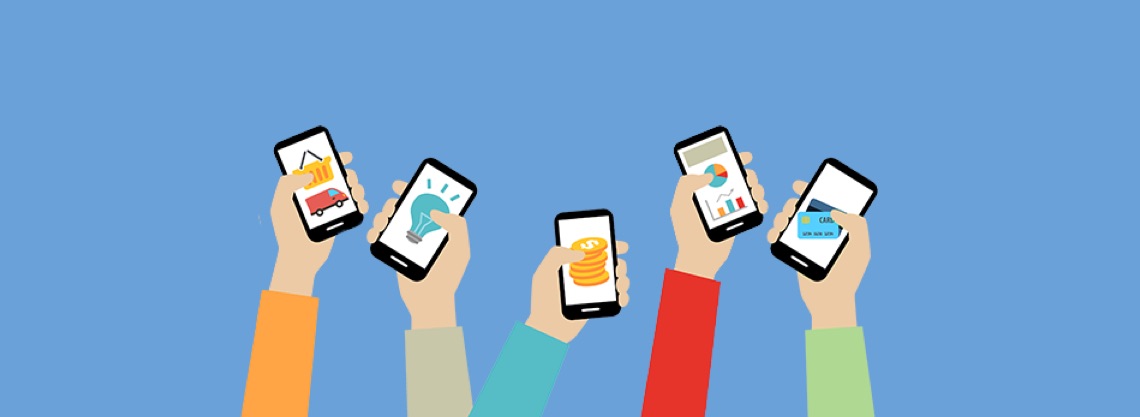Most of the resources are scarce. Having invested its money, time, and effort in the mobile app development, a company is expecting to make money with apps and suffer no loss. The abundance of investing is still not the key factor in getting a good ROI. Alternatively, business operations should correspond to the wise use of incentives. Not only are software development and deployment important but it is also continuous updating that must be rewarded. When the product is paid for, the growing popularity can afford a solid financial support to the business owners and creators. Yet, it is not obvious what “incentives” would contribute to the financial success. When installing an application is as easy as ABC, how to make money from apps without ads is a reasonable question.
Why not make it paid?
Before we start, it should be emphasized that having users pay for mobile apps, though being a seemingly handy way of the product monetization, one is running the risk of dooming a project to failure.
The market is flooded with applications available free of charge. Consequently, browsing the paid counterparts on either Play Store or App Store is too pointless an endeavor to undertake. The chances are you will not even be discovered. If the difference is not worth paying for, there is no reason to buy goods or services when you can get free ones instead. If this difference is substantial, pricing problems occur. Often, finding a sweet spot between under- and overestimated value of what joint efforts have resulted in might be challenging enough.
Instead of bothering their heads about the right pricing strategies for their products, most app providers have decided to go free. The recent report proves that the trend is stable since freely distributed applications hold the market share of over 94% by now.
The best strategies for making money from free apps
Revenue-generation strategies, as is the general rule, are unequally efficient. Some of them are discomforting users. Blended app monetization methods employment thus refers to compulsory measures for companies willing to cover their costs and make a profit.
The most popular Free App Monetization Methods, which can be divided into two categories. In the former case, the revenue source is advertisers’ spendings made with a view to marketing their products; in the latter one, the users are in a position to decide whether they are willing to purchase goods and services the app itself or as a mediator offers after being installed.

1.1. Advertising. The least energy-consuming way to generate revenue within the free-app model is by using in-app ads. Media space is being sold to get ad placements there organized for further brand promotion on target markets. An ad buy is thus a simple transaction that allows taking advantage of the traffic whenever end users see an advertisement their displays. With a view to creating a better UX, you should prevent your advertising from being intrusive and choose smartly, given the following ad types:
- Banner ads are integrated to appear on the top or bottom of a device screen. Making up your mind to fill the media space with these ‘rectangles’, you have to find a balance between their informative value and moderate expressiveness unable to distract users (in fact, this is true for all sorts of ads).
- Interstitial ads are either banners or videos shown full-screen which are increasing the Conversion Rate when implemented wisely.
- Native ads are the advertising harmoniously integrated into an app theme so that the UX and the ad could coexist and complement each other. Due to their effectiveness, native ads often serve as a piece of content sponsored by a particular company.
Pros: Now that advertising has grown in popularity so drastically, many ad networks and libraries are here to serve ads without software engineers’ writing extra lines of code. Besides, applying machine learning-based algorithms in Internet advertising may bring about the broader engagement and maximized revenue.
Cons: The apps’ ratings are negatively impacted, which is very similar to a chain reaction. Most users are annoyed with the ads. This annoyment makes people rate applications badly and write negative reviews. It has a bad influence on downloads and, consequently, the revenue. On top of it, advertising implies hidden expenses related to ad network usage, app performance, and ad-related code maintenance effort. This way, APIs can not only provide an access to ad libraries but they also consume processing power degrading the overall performance.
E.g. Twitter, Instagram, Facebook
1.2. Sponsorship. If a business owner (an advertiser/ a sponsor) is looking for a strong commitment and an ongoing arrangement with a platform-provider, it can help a free-app owner monetize his or her product via sponsorship. In this case, a business enters into a partnership with a mobile app provider on mutually beneficial terms. The application, however, should have a solid user base and be popular among the would-be clients of the company offering its sponsorship. The question naturally arises: How do apps make money without ads?
E.g. Tinder, TripAdvisor, CityMapper
2.1. Subscriptions. Another way to monetize free apps is by charging their users. The content, not the functionality, is what valued most in subscription-based apps. This model is typically applied in companies promoting B2B initiatives and requires applications to deliver their services (distribute their content) to the customers regularly.
Pros: As a source of income, subscription fees are more reliable than advertising, which is perfectly understandable to Apple. When an application retains a subscriber for a year, the standard 70/30 revenue split transforms and the app developers’ share amounts to 85%. Consequently, subscription-based apps are inclined to generate more in average revenue from their clients than if they were taking advantage of other methods. The clients, in turn, will be more engaged with an app after buying a subscription.
Cons: The content the application offers must always be of a high quality. If it is not, the odds are customers will cancel the subscription as soon as they can. So much is at stake that it keeps the subscription-based model from becoming a viral success.
E.g. Netflix, the New York Times, Forbes

2.2. Freemium. This model is designed so that there are “lite” (“free”) and Pro (“premium”) versions of an application. It’s becoming ever more evident that companies should stop relying too much on advertising revenue and become more user-oriented. When applied properly, this model can provide a constant revenue stream.
Pros: If a user discovers at installation that he or she does not have a hard time working with the limited functionalities and features, the “lite” version will do. In case they try upgrading to Pro, a range of features is widening and an application comes without advertising.
Cons: The freemium has to focus on making more clients pay for upgrades. As usual, it is all about finding balance. Deciding wisely on what features to make free keeping the initial offering not too rich, giving a clear explanation of the premium version advantages, and offering a reasonable pricing are the steps one should take.
E.g. LinkedIn, Dropbox, Skype
2.3. In-App Purchases. What is more, free apps make money when they contain items for sale. Purchases are not material things. They are virtual and used only inside the application. Thus, people can get some items or services for a single use or come to have a permanent access to them.
Pros: A revenue is bound to be big if the app audience that is purchasing items is wide. Besides, IAPs give users incentives to remain in the app longer. The more time is spent, the larger your income is.
Cons: With rare exception, the model is primarily employed in games.
Tips for choosing the best app monetization method
Not only should you know about the ways to earn with a free application, but you should figure out which popular app monetization methods are likely to be a perfect match for your application specifically. Namely, how engaging an application is, what strategies are employed successfully by the competitors working in your niche, who the app audience are and whether they are ready to pay (regularly) — these are the general points to be clear about. However, if we are talking about making concrete recommendations, here they are:
1. One way or the other, a free application will seem to be more attractive either for advertisers as a platform for placing ads or for users as a source of quality content they are craving to buy. So, who is your app appealing to more?
2. Care about your audience. Pay attention to actual user behavior — setting up a heat map to track it can be of great help.
3. Think of the strategies that would interfere with the UX as naturally as possible.
As clichéd as it sounds, your product must stand out. Too many apps are being released and only taking great pains you will get your application discovered and widely used. Since the success of a monetization strategy depends heavily on the UX, possible options should be considered in the app development stage yet.
First of all, an app has to be adapted to different platforms. We have discussed before how different iOS and Android are, their demographics inclusively. Therefore, the odds are you will have to not only optimize ad formats but also choose different strategies. At first, decisions will be made based on the external data. After the app release, do not hesitate to take advantage of the data analysis tools, which are aplenty now. In fact, there must be enough users for more precise results. Here, we are turning to the subject of reasonable pricing. Charging too much will result in nothing but the loss of business (there is bound to be another app that is asking to pay less or uses ads as a source of revenue), that’s for sure.
Interestingly, although users usually do not expect much from free offerings, their commitment is very shaky too. The use of multiple models of monetization can be, in certain circumstances, beneficial if you do not overdo it. Sometimes, it is better to rely on a single method than to force feed customers various ads, IAPs and subscription offers at a time.
Conclusion
All in all, free apps are our present and our future. If the only thing that prevents you from making your product more available is the uncertainty about how to make a profit from your free app, we have some good news.
Regardless of your app category, there are monetization options to choose from. The above strategies are all workable and countless examples can be given to prove it. Even free apps are profitable as long as they are used. So, be wise, creative and let people get absorbed by your application!

© 2018, Vilmate LLC




